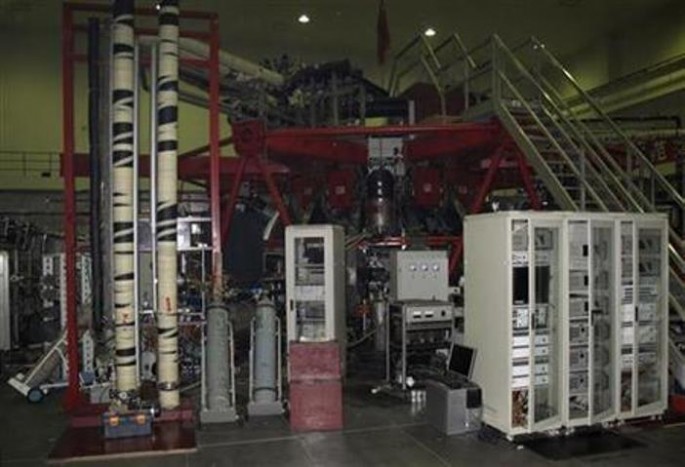China has started building another underground space that will block cosmic rays in the world's deepest subterranean lab in southwest China. The facility will help scientists trace the origin of elements, the Xinhua News Agency reported.
The China Institute of Atomic Energy told Xinhua that they have started building a nuclear astrophysics lab in the Jinping Underground Laboratory, which is 2,400 meters deep in a mountain in Sichuan Province.
According to the report, nuclear astrophysics is a frontier science that studies nuclear reactions within stars, the process that creates many elements. The report added that research into this area would provide insight into stars' evolution and the origins of elements.
"The lab will offer the world a new top-class platform for conducting precise measurement on nuclear astrophysics," Liu Weiping, vice dean of the institute, said.
According to Liu, researchers are hoping to use the facility to explore the birth of heavy elements by measuring neutron source reactions.
Cosmic rays are known to have disrupted previous observations, scientists said.
According to the report, the new lab will provide a "clean" space for a number of physical and cosmologic experiments, which include concerns on the search for "dark matter."
The report said that the facility opened in Dec. 2010 and was expanded in 2014.
In an article on www.eurekaalert.net in Sept. 2014, Chinese and U.S. scientists reported on the PandaX search for dark matter based on the results of the first stage of experiment, which was published in the Beijing-based journal SCIENCE CHINA Physics, Mechanics & Astronomy.
The PandaX project, the first dark matter experiment in China that deploys more than 100 kilograms of xenon as a detector, was designed to monitor potential collisions between xenon nucleons and weakly interactive massive particles, hypothesized candidates for dark matter.
In the said study, scientists explained that "dark matter is a leading candidate to explain gravitational effects observed in galactic rotational curves, galaxy clusters, and large-scale structure formation."
"Weakly interacting massive particles (WIMPs), a particular class of dark matter candidates, are interesting in particle physics and can be studied in colliders [and in] indirect and direct detection experiments," the study said.



























